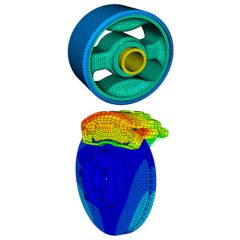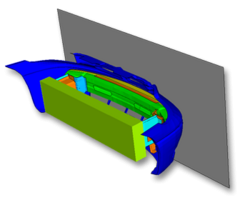Introduction to SIMULIA Abaqus
This training course is a comprehensive and unified introduction to the modeling and analysis capabilities of Abaqus. It teaches you how to solve linear and nonlinear problems, submit and monitor analysis jobs and view simulation results using the interactive interface of Abaqus. The following products will be covered: Abaqus/CAE, Abaqus Standard and Abaqus Explicit.
Available releases: 2018-2021
Duration: 32 hours
Course Material: English
Level:Fundamental
Audience: New Abaqus users who will primarily use Abaqus/CAE to create their models should attend this seminar.
Prerequisites: No previous knowledge of Abaqus is required, but some basic knowledge of finite elements and continuum mechanics is desirable. Also, some familiarity with interactive modeling is helpful but not required.
Additional data:
The training course is divided into lectures, demonstrations and workshops. The course’s workshops are integral to the training. They are designed to reinforce concepts presented during the lectures and demonstrations. They are intended to provide users with the experience of running and trouble-shooting actual Abaqus analyses.
Content:
- Lesson 1: Overview of Abaqus
- Lesson 2: Working with Geometry in Abaqus
- Lesson 3: Working with Models created outside Abaqus
- Lesson 4: Material and Section Properties
- Lesson 5: Assemblies in Abaqus
- Lesson 6: Steps, Output, Loads, and Boundary Conditions
- Lesson 7: Meshing Imported and Native Geometry
- Lesson 8: Job Management and Results Visualization
- Lesson 9: Linear and Nonlinear Problems
- Lesson 10: Static, General Analysis procedure
- Lesson 11: Static, Linear Perturbation; Buckle & Frequency procedures; Multistep Analyses
- Lesson 12: Dynamic, Explicit procedure
- Lesson 13: Analysis Continuation Techniques
- Lesson 14: Constraints and Connections
- Lesson 15: Contact
- Appendix: Element Selection Criteria; Analyzing Nonlinear Quasi-Static Problems; Heat Transfer & Thermal-Stress Analysis





